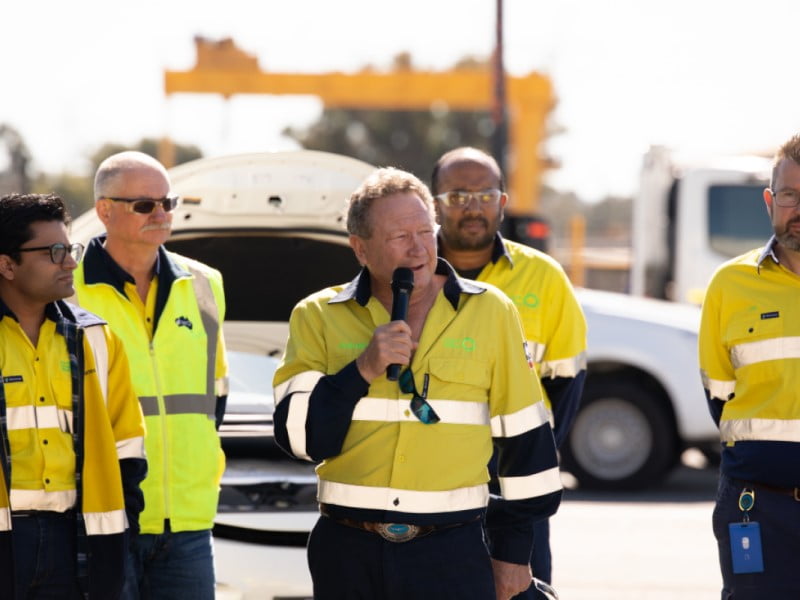Andrew Forrest’s $9 billion package to accelerate the decarbonisation of iron ore giant Fortescue’s operations by 2030 includes the mass deployment of more renewable energy as part of an accelerated plan “to transition to the post fossil fuel era.”
The US$6.2 billion (AU$9.24 million) will be mostly invested in financial years 2024-28 and includes the commercialisation of a series of decarbonisation technologies through Fortescue Future Industries (FFI).
Fortescue will also deploy an additional 2-3GW of renewable energy generation and battery storage. The firm is also currently undertaking studies to optimise localised wind and solar resources.
This will help meet the firms existing 2030 target for net zero scope one and two emissions as it drives for “real zero” emissions by cutting diesel, gas, and Australian Carbon Credit Units from its scope one and two operations.

Fortescue executive chairman Andrew Forrest said that the company must accelerate its “transition to the post fossil fuel era”.
“Fortescue, FFI and FMG, is moving at speed to transition into a global green metals, minerals, energy and technology Company, capable of delivering not just green iron ore but also the minerals, knowledge and technology critical to the energy transition,” Mr Forrest said.
“Consistent with Fortescue’s disciplined approach to capital allocation, this investment in renewable energy and decarbonisation is expected to generate attractive economic returns for our shareholders through energy cost savings and a sharp reduction in carbon offset purchases, together with a lower risk cost profile and improvement in the integrity of our assets.”
Earlier this year Fortescue acquired British electric motor specialist Williams Advanced Engineering and announced plans to develop an electric ‘Infinity Train’ that uses gravitational energy to recharge, which it expects to be deployed in 2026.
Fortescue also partnered with German-Swiss equipment manufacturer Liebherr in June 2022 for the development and supply of green mining haul trucks. Fortescue expects to rollout zero emission battery and hydrogen trucks by 2025.
FFI is also constructing a $114 million electrolyser production facility in Gladstone, Queensland which is expected to come online in 2023. Fortescue’s green subsidiary also expects to produce 15 million tonnes of green hydrogen annually by 2030.
Through Fortescue’s decarbonisation strategy, it expects to make cumulative costs savings of US$3 billion by 2030 and recovered its capital investment in cost savings by 2034. It will also avoid 3 million tonnes of carbon dioxide emissions equivalent per annum.
By 2030, the firm expects to displace around 700 million litres of diesel and 15 million GJ of gas per annum.
The announcement was made in New York at a chief executive officer roundtable on ‘Business leadership to rescue the Sustainable Development Goals’ attended by the United Nations Secretary General António Guterres. It was made at the invitation of the United States President Joe Biden’s First Movers Coalition and the United Nations Global Compact.
Fortescue is a founding member of the more than 50-member coalition. It aims to drive the decarbonisation of seven industrial sectors which collectively account for 30 per cent of global emissions. On Wednesday, Rio Tinto was the latest to join the coalition.
Do you know more? Contact James Riley via Email.

